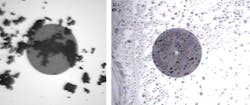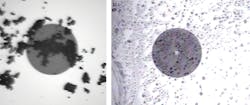Fiber cleaning and inspection: Inspect before you connect
The first in a series of articles exploring fiber inspection and cleaning
By Brian Teague, Sticklers Fiber Optic Cleaners and Tyler Vander Ploeg, VIAVI Solutions
Sticklers Fiber Optic Cleaners and VIAVI Solutions have combined our knowledge and experience to bring readers of Cabling Installation & Maintenance a series of informative and comprehensive columns looking at how network owners and fiber technicians can maintain faultless networks. Based on the video series titled “Inspect Before You Connect,” in this article series we will discuss inspection and cleaning processes and techniques to prevent endface contamination on optical connectors—one of the most common reasons for fiber network failures.
Contamination residing between a mated pair of optical connectors will cause signal degradation and can lead to permanent defects like scratches and pits, which can damage both cable assemblies. Because of this fact, the importance of the Inspect Before You Connect (IBYC) process is essential for anyone working in fiber connectivity.
Most contamination will be microscopic, and will obstruct the signal transmitted along the fiber.
Guiding the fiber-optic industry are several benchmarks, for example the IEC 61300-3-35 standard for inspection and cleaning fiber-optic connectors. Although there to help, some in the fiber industry do not have access or simply do not understand these standards. Therefore, the use of a simple process like IBYC is essential to implement as a best-practice procedure.
IBYC is a process that is easy to follow and ensures perfectly clean fiber every time to guarantee networks are running efficiently.
How does IBYC work? It’s easy. First, inspect, then clean (if necessary), reinspect, and finally connect. This simple process should be the standard practice used by all fiber technicians.
So why is the procedure not always performed by technicians? There are many reasons the IBYC process is not done. We have heard everything from, it takes too long, or there are too many tools to carry, through to, you don’t need to do it.
Contamination is the number-one threat to optical networks. For those who say they do not have time to inspect, we ask, do they have time to go back if there is a contamination issue?
Contamination is a type of defect on the connector endface that can come from many sources including lint, fingerprint, oils, moisture or simply airborne dust. Most contamination will be microscopic and will obstruct the signal transmitted along the fiber. The only way to know if an endface is truly clean is through inspection.
The goal is to eliminate any variability in the process, and that’s where standards like the IEC 61300-3-35 come in. This standard sets the inspection requirements for connector quality and in determining replacement or cleaning. A microscope specifically designed for fiber inspection is the only way to determine, without a doubt, whether connectors are clean before they are mated. If it is found that contamination is present, with a few simple steps and the proper tools, dirty connectors and slow networks can be a thing of the past.
The IBYC—Inspect Before You Connect—process calls for technicians to 1) inspect, then 2) clean if necessary, 3) reinspect, then 4) connect. The simple process should be the standard practice used by all fiber technicians.
IBYC is a simple process that takes seconds to do and reduces downtime and troubleshooting; it optimizes signal performance and prevents network damage. Proactively following the IBYC process for both sides of a fiber connection is the only way to ensure fiber connectors are free of contamination.
In the next article in this series, Sticklers Fiber Optic Cleaners and VIAVI will discuss the value of IBYC and why it should be followed proactively. We will also look at why all fiber connectors (even new) should be cleaned and inspected.
With more than 20 years of experience with fiber-optic connectors and cable assemblies, Brian Teague is product manager for Sticklers Fiber Optic Cleaners.
Tyler Vander Ploeg, RCDD is the fiber solutions marketing manager at VIAVI Solutions. His 17 years of experience in the fiber-optic industry includes managing and developing new fiber-optic connectivity and test products and conducting educational training in fiber connectivity and test.


